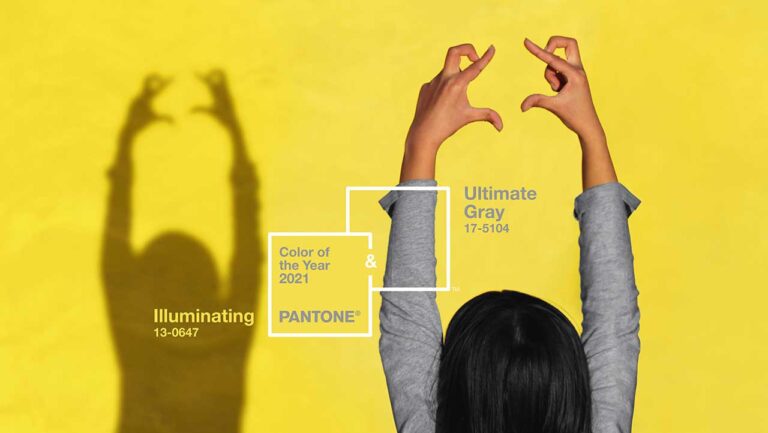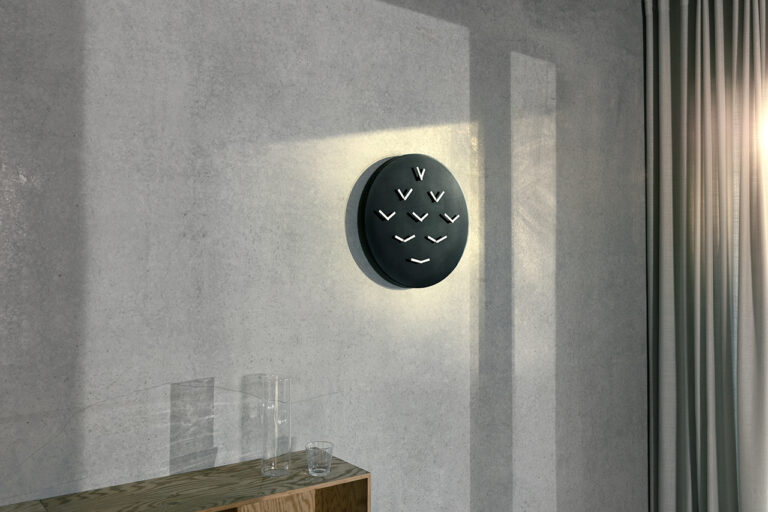Circular&Co Turn Discarded Single-Use Coffee Cups into Reusable Ones
Former Dyson inventor, Dan Dicker, founded the forerunner to Circular&Co in his garden shed in the far southwest of the UK in 2003. Circular Cup is the latest in a series of innovative products that reuse waste and create value from materials that were once destined for landfill – in fact, 17 years on, Dan estimates that his company has prevented 187 million single-use cups from entering waste streams. We caught up with him to find out more.

Tell me a little bit about your childhood, education and background in terms of how you first became interested in creativity, design and sustainability.
Wizardry, in a word! To me, product design is a type of witchcraft. I mean that positively because when I was a child the ability to turn what started out as an idea or a drawing in my head into reality seemed magical. Even now, it seems magical and that’s what drives me. Designers are in a unique position of being able to turn ideas – dreams – into reality. You have got the functional goals, and you have got every aspect of the thing right in order to meet them, and I find that fascinating and thrilling. From a practical level in education, I enjoyed making things and being hands-on. I liked the fact you could have an idea in your head first and then develop it all the way through to something that would eventually stand there in front of you doing its thing – something beautiful, tangible and lovely.

How would you describe Circular&Co – and the Reusable Coffee Cups in particular?
Circular&Co is a mission to try to make all our products follow the circular economy and design model. But then we also have a mission to try to educate, not just consumers, but also trade and industry on how to become more circular too. The reason for that is we genuinely believe it’s the future. We are running out of resources, and the only conceivable way to prevent that is to reuse what we have already got. It’s really quite simple and straightforward. The design has to change, and we have to adapt to see that before we run out of time. I don’t think anyone can really argue with us on that – it’s coming and things have to change.

The Circular Cup itself is best described as the ambassador or pioneer of what we deem a circular model when it comes to design. It has been designed with circularity in mind: it uses as much recycled content as possible; it is designed for longevity, and it is designed to last for 10 years. We have designed the ability to replace components that might wear out to extend its life. And we’ve designed it to be recycled at the end of its life – through a curbside recycling service or our worldwide take-back scheme. It is about making a product last for as long as possible, and then capturing it again and turning it back into another cup, or another product, and those are key pillars of circular design.

What inspired this project?
This project was not actually inspired – we were asked to do it! As a company, we design not just our own products but products for other brands – from a circular perspective. So, we will look at and analyze their waste streams and then suggest products that could be made from that waste stream. That results in all kinds of products from a pencil to a pallet – it is about turning their waste into a functional useful product, on budget. When Hugh Fernley Whittingstall and the BBC announced to the world that single-use coffee cups weren’t getting recycled, the coffee industry approached us to see if we could help. We quickly worked out a way of recycling the whole cup, so we didn’t have to separate the inner liner from the paper, which is obviously very complicated, and isn’t something that can be done through general paper recycling – hence the problem! The obvious product to turn them into was a reusable cup – that started to attack the problem at both ends, so that is how the project came about.

What waste (and other) materials are you using, how did you select those materials and how do you source them?
Across the business, we source a vast array of different waste materials from other brands, but they tend to be problematic materials because anything that is easy to recycle is already being recycled. Of course, we have the infrastructure to cope with card, aluminum, paper and ‘easy’ plastics, but it’s the other stuff where the infrastructure hasn’t been built yet where we really specialize. That’s where the circular economy really kicks in because when you design a product from waste, you create demand for that material. That stimulus in demand, coupled with that material being used in a higher value product, justifies the cost of that material being collected, processed and recycled and hence you have the ability to turn that processed material into a product. So circular design stimulates demand for awkward materials and creates a sustainable economic model for that material be picked up, collect, and processed. Before we designed the Circular Cup there was one, possibly, two companies in the UK collecting paper cups and recycling them, now there are 18 – and that has been, in part, due to this circular model that we have introduced targeting this problematic material.

When did you first become interested in using waste as raw material and what motivated this decision?
When I started Circular&Co (then ashortwalk) 17 years ago, I was told my product should be either cheap or unique and I wanted it to be unique. Rather than just trying to develop a product for a new market or to fill a new need, I realized there was another way of approaching product development and that was to look at the fundamentals of how you design and the materials you use. So, it was partly about trying to be unique in the marketplace. The second part was just a moral obligation, I knew that it was technically possible to start making products out of waste materials. The only thing made of waste in those early days was sheet materials made from melted wellies or melted CD cases and that kind of approach. They were expensive to make and not particularly commercial, so I saw an opportunity to use recycled materials to make aesthetically pleasing and highly functional products. First and foremost, the product had to fulfill a need and perform well, but the second part was to make it out of reused material.

What processes do the materials have to undergo to become the finished product?
Importantly the processes involved in capturing and reusing waste are generally lower in energy and carbon emissions compared to using virgin materials. If we use the Circular Cup as an example; used cups are collected within cafes, separated from general waste and recycling, stacked and sent to a recycling facility. There, they are compressed and bailed. They are then transported to a processing facility that cleans, shreds and compounds the cup with recycled plastic to form a resin. This resin can be used in conventional manufacturing techniques such as injection moulding, extrusion and compression moulding. The circular industry will always attempt to try and keep this process in the tightest possible geographical area, so the Circular Cup sources waste materials near the production facility.

What happens to your products at the end of their life – can they go back into the circular economy?
We design our products specifically to feed into the circular economy by ensuring that they are easy to recycle. It is important to note that products must be designed for the end of their life, in a way that fits into the infrastructure that we have established. Many products can claim to be recyclable, and just about everything is in principle, but they won’t be if there isn’t the infrastructure to support this. If we feel there may not be the infrastructure to recycle, then we offer take-back schemes for all our products to accommodate for this. Customers can send these items back to us and receive a discount on new products, ensuring these resources get recycled and reused.

How did you feel the first time you saw the transformation from waste material to product/prototype?
Relieved! With any research and development process and any new product, there is always a pressure that you put on yourself – you just hope it is going to work! I would like to say excited, but I think for all designers you are initially just relieved it worked! After that comes the excitement, and with the Circular Cup, I always remember the first time I saw it being used by a member of the public. I was at Exeter services on the M5 and my two children both shouted “Daddy, daddy, other there! There’s someone with a Circular Cup!” and lo and behold there was a guy queuing up for Burger King with a cup in hand and that was the first time we had seen anyone with one. That’s the pleasure you get as a designer, and when you’re looking at a circular design, it’s not only that you’re providing a functional cup that people love, but you’re also making a difference in that you’re using waste materials and hopefully educating people too, so it isn’t just a cup.

How have people reacted to this project?
It’s won lots of recycling awards and gets great consumer reviews and what I find really interesting is that a lot of that is because it’s just functionally a really good design, which I’m really proud of. Yes, it is made from waste and everything that involves and everything that delivers driving change, but first and foremost it is a really well-designed product. it does exactly what everybody needs in a cup. It is completely leak-proof, it is thermally insulated, it is robust, it lasts a long time, it has got a unique, easy-to-use push-lid. First and foremost, people love it because it just works. They seem to be quite relieved that they have finally found a reusable cup that works and that is lovely and something to be really proud of.

How do you feel opinions towards waste as a raw material are changing?
We have noticed a huge shift in the last three to four years – we are busier than ever because people realize that the world needs to go circular. In the UK, legislating and policy are changing. We have already seen a waste bill requiring a lot of food packaging to have 25% recycled content by 2025, so producer responsibility is starting to come in. It is only a matter of time before that kind of legislation applies to white goods too. Consumers are starting to appreciate the value in making products from waste materials and people are increasingly willing to spend more and support that – especially the younger generation.

What do you think the future holds for waste as a raw material?
Purely out of necessity, at some point, the world will have to change because we are going to run out of resources. If you just want the next glorious product that everyone is going to buy, if we are not careful, it just will not be there because you have got nothing left to make it from. We are already at a stage where companies are mining old landfill sites to try and get back the raw materials that 50 years ago, we just simply discarded. It might look quite bleak because we were running out of resources, but on the other hand, it’s a fascinating and exciting time to be involved with design. We’ve got the ability to change and move forward. We hold that power and we have the opportunity. I think we’ll look back on this as the moment in time when we all woke up, realized mass consumption was fundamentally flawed, and then turned it around. So waste represents a great opportunity and it is going to be the next great area of innovation. I really believe that, so I think it is an exciting future!






Leave a comment